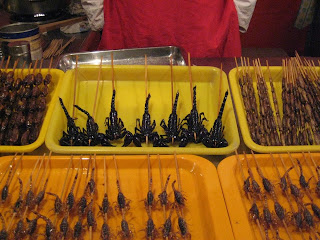I've been studying narrative arcs.
The goal--to tell the story in the best way for that story.
The plot theory most people are familiar with is Aristotle's. At the most fundamental level, a narrative arc is the arrangement of the events in a story.
Small changes such as the repositioning of a page turn, or switching the position of two sentences can change the meaning of picture book story and alter the narrative arc. "Small" changes have a big influence in a novel's arc too, such as changing the order of scenes, or altering a beginning or ending of a chapter.
Narrative arcs are created by a variety of techniques, including the order of events, how and where and if a climax occurs, point of view, setting, tone, repetition, and layering of thematic elements. All of these choices and more contribute to the narrative arc. The characters and their arcs can follow the same trajectory as the narrative arc, but sometimes follow a different pattern.
Narrativity theory, or the way the writer writes the story and the way the reader reads, should be considered when revising.
A few questions to consider.
Will the story be linear or non-linear?
How many characters tell the story? One, two, ten? Or is a storyteller narrator best?
Is an experimental form better than a traditional arc?
Can more than one arc be layered in the story?
What should be included and just as important, what should be left out?
The arc creates the rhythm of the story. In many stories this will show as the increase and decrease of tension. In other stories, the story carries the reader along at a constant rate and in others there is a steady increase of tension. Tensionless stories also exist.
Part of what I've been studying are atypical narrative arcs in picture books, and how these books engage the reader, even when some "essential" elements are removed. I'll give a 15 minute presentation on ways to craft a spine by using atypical narrative arcs at residency next July at
Vermont College of Fine Arts.
I started thinking about this last residency during workshop when
Uma Krishnaswami mentioned a few ways to create narrative arcs. This is especially interesting with picture books, because there are so many available narrative approaches that are effective with picture book narration. It apears most of the theory and discussion focuses on other areas of literature. There is much to consider about narratology and literary theory within the picture book genre. From what I've explored so far, picture books seem to revel in the freedom of atypical arcs.

 Here is another section of the Christmas market, a few blocks away, right at dusk. It isn't crowded yet--an hour later it was hard to walk through the market.
Here is another section of the Christmas market, a few blocks away, right at dusk. It isn't crowded yet--an hour later it was hard to walk through the market.
 There are hundreds of Christmas markets throughout Germany and we hope to visit another market this coming weekend.
There are hundreds of Christmas markets throughout Germany and we hope to visit another market this coming weekend.




















